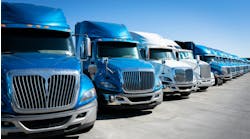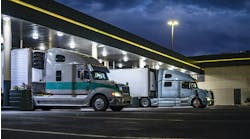I’ve talked before about how words matter and about the importance of coming to an agreement on what certain terms mean, but I feel the need to revisit the topic again.
Let’s take the word trucking. Many people, even those in the trucking industry, define trucking as Class 8 sleeper tractors that rack up millions of miles traveling long distances crisscrossing the country not knowing where the next trip might be. And while there is no doubt that Class 8 trucks are a vital part of trucking, they only represent 9% of the total market. The rest of the market is regional haul or trips made with smaller classes of trucks.
And I would be remiss if I did not address the belief that all long-haul trucking is done with sleeper cabs. According to ACT Research, sleepers account for 60% of tractor production, while day cabs make up the remaining 40%.
Then there is the whole notion of long haul. What exactly counts as long haul, and is that mileage set in stone? I suggest that the answer to that question is no. The U.S. trucking industry has seen a shift in the length of haul. Many reasons have contributed to this, not the least of which is the explosion of e-commerce and the desire of drivers to be at home more often.
See also: Navigating the messy middle: Lithium battery systems for emissions and cost savings
In addition, there's been an increase in return-to-base operations in longer regional hauls, so I think we must include both over-the-road and return-to-base operations in the industry’s definition of long haul. And given what we know about the split between sleepers and day cabs, we have to acknowledge that it is no longer just sleeper tractors that are logging long miles each day. Day cabs are also an important part of long-haul trucking. We’ve talked to fleets that have drivers stay in hotels when their delivery requires them to be away from home for a day or two.
I think it is important to remember that when defining long haul, we focus on the total number of miles driven in a 24-hour period. It does not matter if those miles were put on driving across the country or driving back and forth multiple times from a depot location. Miles are miles.
You may be wondering why I think it is so important that we gain a new understanding of what constitutes long haul. It has a lot to do with which powertrain options will work for fleets as we navigate what NACFE has dubbed the “Messy Middle.”
Consider this example from our white paper, A Need To Redefine Class 8 Long-Haul Trucking. “Currently, if there are 200 gallons of fuel on a diesel-powered truck, and the truck averages 8 mpg, it can travel for about three days without needing to stop for fuel. Today’s battery electric-powered trucks are capable of about 250 miles on a single charge but can go much further when they can take advantage of opportunity charging.”
While long-haul trucking represents a small portion of the trucking industry, it contributes a significant portion of trucking-generated emissions. If we want to decarbonize trucking, we need to have a better understanding of the options that are available to fleets. And that means having better definitions of exactly what long-haul trucking encompasses so that fleets can select the powertrain solution that best fits their specific application.




